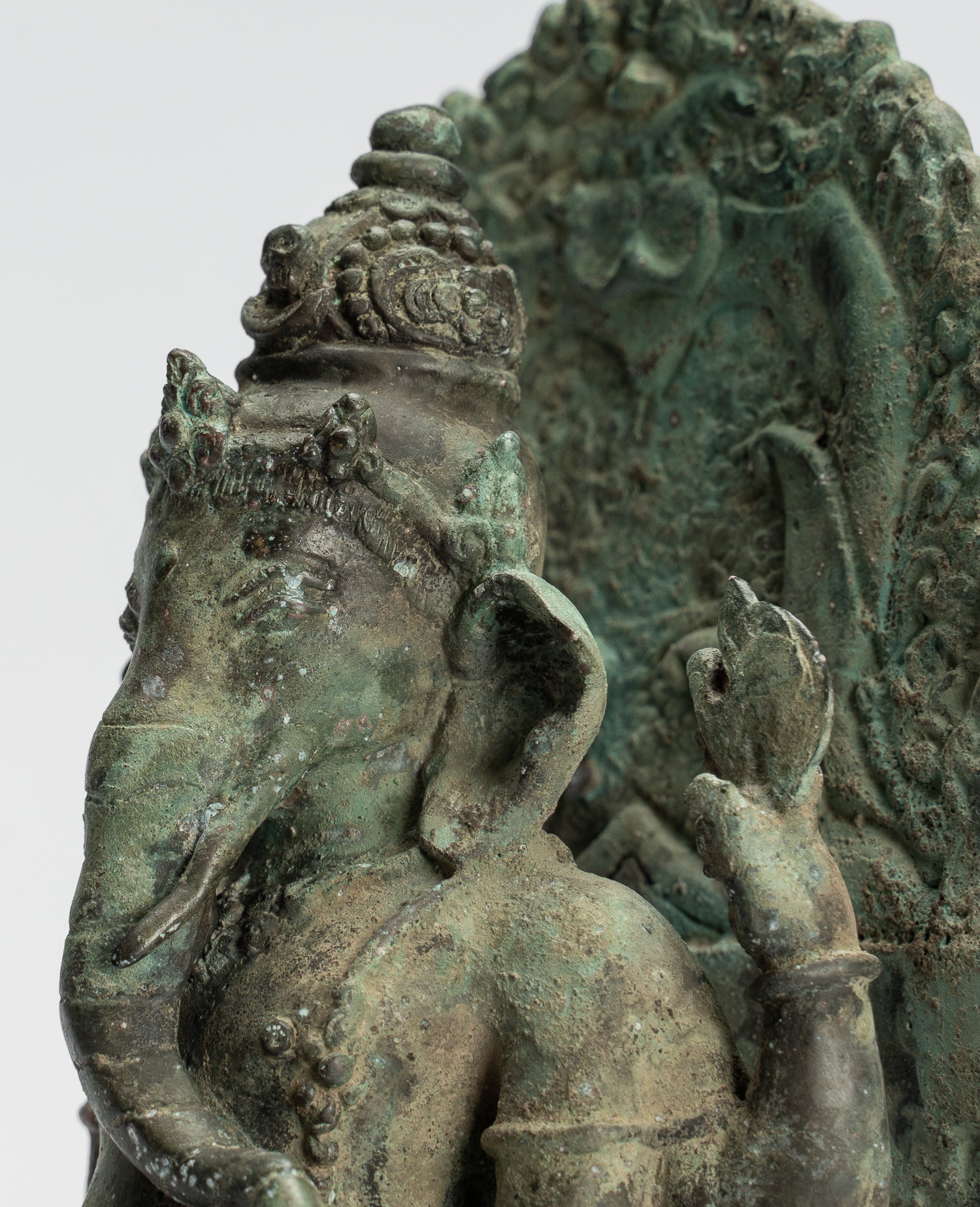
Unveiling the Divine: The 3 Most Important Things to Know About Ganapati Murtis
Introduction
In the vast pantheon of Hindu deities, Lord Ganesha, also known as Ganapati, holds a unique and revered position. The embodiment of wisdom, intellect, and remover of obstacles, Ganapati is worshipped across the world with deep devotion. The presence of Ganapati Murtis, or sacred sculptures, plays a central role in Hindu homes, temples, and ceremonies.
In this comprehensive blog post, we unravel the three most important aspects to understand about Ganapati Murtis, exploring their symbolism, significance, and the spiritual essence they bring into the lives of devotees.
1. Symbolism in Ganapati Murtis:
Ganapati Murtis are crafted with meticulous attention to detail, each element carrying profound symbolism:
-
Elephant Head: The most distinctive feature of Ganapati Murtis is the elephant head, symbolizing wisdom, intelligence, and the ability to overcome obstacles. The elephant is revered in Hinduism for its strength, resilience, and gentle nature, qualities associated with Lord Ganesha.
-
Large Ears: Ganapati's large ears signify the importance of attentive listening. Devotees believe that by listening carefully to the prayers and concerns of worshippers, Ganesha offers guidance and blessings.
-
Trunk: The trunk of Ganapati is both symbolic and functional. It represents adaptability and efficiency, as an elephant's trunk is a versatile tool. Devotees believe that Ganesha can adapt to any situation and efficiently remove obstacles from their lives.
-
Four Arms: The four arms of Ganapati Murtis hold specific attributes. The upper right hand often carries a goad or ankusha, symbolizing the power to guide and control. The upper left hand holds a noose (pasha), representing the power to capture desires and attachments. The lower right hand is extended in a gesture of blessing (abhaya mudra), and the lower left hand holds a modak (sweet), symbolizing the rewards of spiritual pursuit.
-
Broken Tusk: Ganapati Murtis often depict the broken tusk, signifying sacrifice and the willingness to overcome obstacles for the benefit of devotees. This broken tusk is a powerful symbol of selflessness and devotion.
2. Significance in Worship and Rituals:
Ganapati Murtis hold immense significance in Hindu worship and rituals:
-
Obstacle Remover: Devotees believe that worshipping Ganapati Murtis invokes the deity's blessings to overcome obstacles, both spiritual and worldly. Ganesha is often invoked at the beginning of ceremonies and rituals to ensure a smooth and successful endeavor.
-
Intellectual Guidance: Ganapati is revered as the Lord of wisdom and intellect. Students and scholars often seek the blessings of Ganapati Murtis to enhance their learning and academic pursuits. Many educational institutions also have dedicated altars to Lord Ganesha.
-
Celebrations and Festivals: The grand festival of Ganesh Chaturthi is marked by the installation of Ganapati Murtis in homes and public spaces. Elaborate processions, prayers, and cultural events celebrate the presence of Ganesha, fostering a sense of community and devotion.
-
Daily Worship: Many Hindu households have a dedicated space for Ganapati Murtis, where daily worship and prayers are offered. Devotees chant sacred mantras, light lamps, and make offerings to express their reverence and seek the blessings of Lord Ganesha.
3. Spiritual Essence and Personal Connection:
Ganapati Murtis transcend their physical form to embody a spiritual essence that resonates with devotees:
-
Remover of Inner Obstacles: While Ganesha is widely known as the remover of external obstacles, devotees also turn to him to overcome internal impediments such as ego, ignorance, and attachment. The spiritual essence of Ganapati Murtis inspires individuals on their path toward self-realization.
-
Personal Connection: Many devotees develop a deep and personal connection with their Ganapati Murtis. The deity is often seen as a friendly and approachable figure, creating a sense of intimacy in the worshipper-deity relationship. Devotees may share their joys, sorrows, and aspirations with Ganesha, fostering a profound spiritual bond.
-
Spiritual Guidance: Ganapati Murtis serve as a source of spiritual guidance, encouraging devotees to navigate life's challenges with wisdom, humility, and a sense of purpose. The teachings embodied in the symbolism of Ganesha inspire individuals to cultivate positive qualities and lead a righteous life.
Conclusion:
Ganapati Murtis are not merely sculptures; they are embodiments of divine wisdom, compassion, and the unwavering spirit to overcome obstacles. The symbolism, significance in worship, and spiritual essence of Ganapati Murtis make them a cherished and revered presence in the lives of millions.
As devotees engage in rituals, seek blessings, and establish a personal connection with Lord Ganesha, they tap into a source of inspiration that transcends the physical form of the deity, guiding them on a transformative spiritual journey.

























